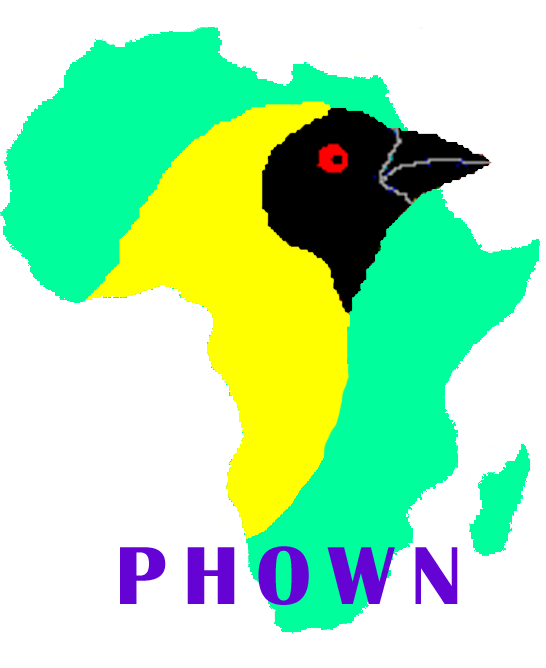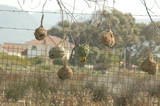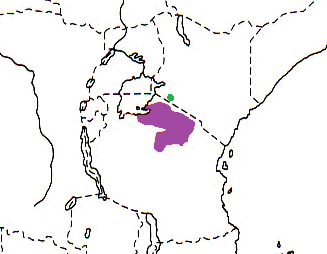Weaver species
Choose different species from drop-down list and press 'Go' button. See Full species list.Rufous-tailed Weaver Histurgops ruficaudus
IUCN: Least concern Discovery: 082Categories: cooperative, acacias, fruit, Nest use, Histurgops+Sporopipes,
News items about species
Discovery
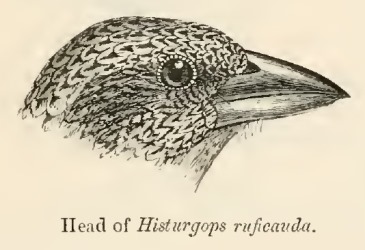
figure from Sharpe (1890) 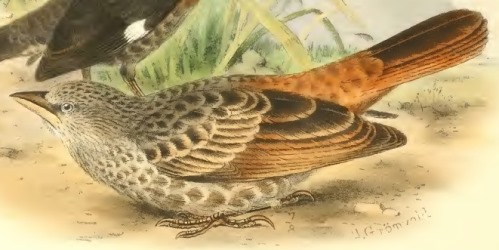
figure from Shelley (1905) 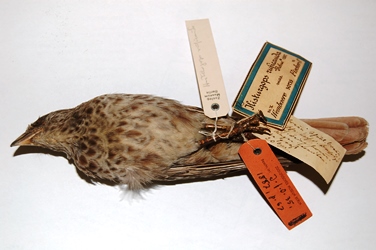
type ZMB_30733 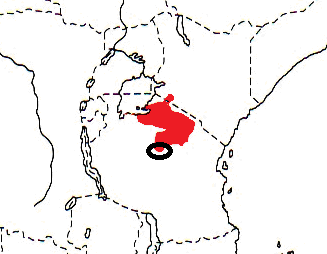
distribution, type locality circled IntroductionThe Rufous-tailed Weaver was formally described by Anton Reichenow, a German ornithologist and herpetologist.The Rufous-tailed Weaver was collected by Dr Gustav A Fischer, a German African explorer. Fischer settled as a physician in Zanzibar in 1876, from where he undertook expeditions to Tanzania and Kenya. Fischer collected some birds in Zanzibar and then undertook a trip along the Kenyan coast where he collected some Fire-fronted Bishops. His third trip started in late 1882 on the Tanzanian coast and he followed the Pangani River upstream. When he reached the Pare Mountains in March 1883, he collected the type specimen of the Black-capped Social Weaver. Fischer visited Europe and then returned to Tanzania in 1885. On 1 August 1885 he left Pangani and travelled south to Irangi and then northwards towards Lake Victoria. On 24 October 1885 he found Rufous-tailed Weavers on the Wembere Steppe at the southern edge of the range of this species. Fischer briefly described the nests and habits of this weaver. The first illustration of the Rufous-tailed Weaver was a line drawing of the head published by Sharpe (1890). The next illustration to be published was a colour painting of an adult Rufous-tailed Weaver in Shelley (1905). Scientific citationHisturgops ruficauda Reichenow 1887, Journ. f. Orn., 35, p.67, Wembere Steppe, central Tanganyika Territory.Meaning of namesruficauda, Latin: rufus, red; cauda, the tail.First English nameRufous-tailed Weaver (Shelley 1905).Alternate namesNone.CollectorGustav A. Fischer.Date collected24 Oct 1885.Locality collectedWembaere steppe, Tanzania.Type specimensThere is a type in the Berlin Museum. |
The above is based on Weaver Wednesday 2, a weekly series about the discovery of each weaver species.
This species text first appeared as
Weaver Wednesday [199] - Discovery [82]: Rufous-tailed Weaver on 2016-04-06
1. Basic biology
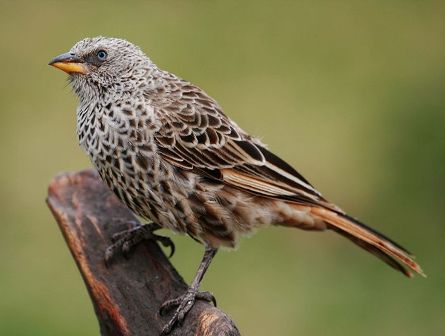
The Rufous-tailed Weaver is in the monotypic genus Histurgops. The meaning of Histurgeo is "to weave (i.e. a weaver bird)" and ops means "face" so the genus name means weaver-faced! (or appearance of a weaver).
Distribution. The distribution map (below) is based on Birds of Africa, shows the restricted range of the Rufous-tailed Weaver in northern Tanzania (purple). However, on 4 July 2000 Dave Richards recorded a group of 5 birds in the Maasai Mara in Kenya, near the border. More records followed from 2007 onwards and the first breeding record in Kenya was recorded by Colin Jackson, as a colony of 7 nests, with chicks, on 14 April 2010. The Kenyan records are shown in green. No subspecies have been described for this species. Habitat. The Rufous-tailed Weaver inhabits savanna thornveld, especially on black cotton soils. Food. The Rufous-tailed Weaver forages on the ground, feeding on seeds, insects and fruit. The birds run on the ground, their legs being longer than those of mostly arboreal weavers, and flocks also make short flights low across the ground while feeding. They often associate with starlings or buffalo-weavers. They are tame and confiding around some national parks and lodges, where they may beg for food. Breeding.
The Rufous-tailed Weaver is monogamous and colonial, with up to 30 nests per tree. They are resident at their nesting colonies and continue building all year. The nest is a ball of grass with a short, wide entrance spout. Initially the nest has two openings with one being closed when eggs are laid, as happens in White-browed Sparrow-weavers.
Gall acacias are preferred as nest sites, with nests usually placed 1.5-4 m above the ground. Although common within its range, incubation and nestling periods are not known for this species. The eggs may rest in the nest with no lining, or some feathers may be used to line the nest. The eggs (clutch 2-3) are pale blue, with grey and brown markings. Nests may be used for breeding by Superb Starlings, and for roosting by Fischer's Lovebirds. |
The above is based on Weaver Wednesday, a weekly series about weaver species.
This species text first appeared as
Weaver Wednesday [15]: Rufous-tailed Weaver on 2012-09-26
2. Breeding facts
| Pair bond Monogamous; colonial Breeding season in May-Jun, Aug and Oct-Feb Nest site placed 1.5-4 m above ground in gall acacia (e.g. Acacia drepanolobium or Acacia tortilis) Nest building n/a Colony size up to 30 nests in one tree Clutch size 2-3 Egg colour pale blue with grey and brown streaks and scrawls, markings sometimes forming wreath at thick end Egg size average size 27.3 x 17.3 mm Incubation No information Chicks and nestling period No information |
Breeding information based on Handbook of the Birds of the World, Vol. 15.
3. Photos of Weaver Nests
 Vm 11331 |  Vm 9896 |  Vm 5716 |  Vm 5673 |  Vm 5602 |  Vm 5245 |
Thumb-nails of most recent PHOWN records - click on one to see its full record
See all PHOWN records for this species here.
PHOWN (Photos of Weaver Nests) provides valuable info on breeding distribution and colony sizes of weavers.
You can contribute by registering and submitting photos at Virtual Museum webpage.
4. Breeding distribution
Google map showing distribution (For species with small ranges you need to zoom in at the correct area to see the range):
yellow blob - range of weaver species; read more about this here.
![]() - PHOWN records with photos
- PHOWN records with photos
![]() - PHOWN records with no photos (Nest Record Cards, other records)
- PHOWN records with no photos (Nest Record Cards, other records)
![]() - Birdpix records
- Birdpix records
![]() - comments on out of range records, or interesting records
- comments on out of range records, or interesting records
![]() - type locality
- type locality
CLICK on the marker on the map to see individual record details.
5. Range changes
Not South African speciesThe above is based on Weaver Wednesday 3, a weekly series about range changes in South African weaver species.
This species text first appeared as
n/a







